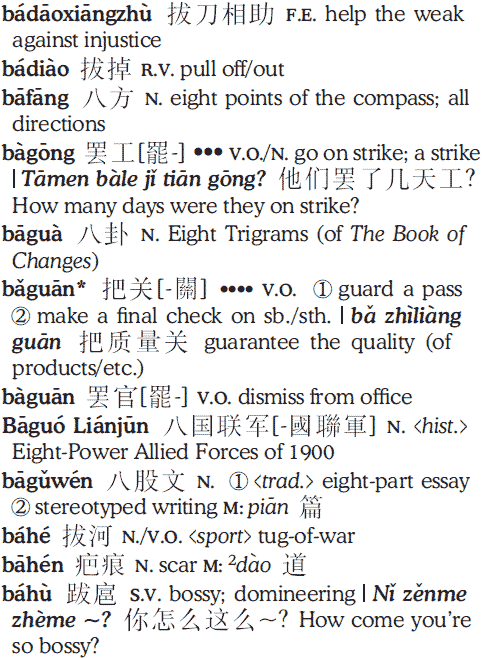[quote=“Dragonbones”][quote=“Petrichor”]Well, there’s no way I’m going to forget this character now!
DB, could you give me the story for the next 3,000 or so? Plus the ways they’ve been put together to make new words?  [/quote] Start here:
[/quote] Start here:
[quote]謝光輝 Xie4 Guānghuī ed., (1997), The Composition of Common Chinese Characters: An Illustrated Account, Peking (sic) University Press. ISBN 7-301-03329-x. It’s a large softcover book with 652 pp., each showing the evolution of one character, with single, representative OB, bronze, and seal forms, accompanied by a brief paragraph of explanation in English and Mandarin (simplified characters), with illustrations and cartoons. Despite the cartoons, this is rather more accurate than the books by Peng, so it can therefore actually be recommended as an introduction to the topic for the casual reader. However, it still does not have the scholarly rigor to make it a suitable text for the beginning university student or serious amateur sinophile, and the single examples don’t give an accurate picture of the diversity of forms at any point in time. The layout is also tremendously wasteful of space, and it is only a partial translation of the larger, Chinese original. With only 651 characters (although more than most sources), its usefulness as a reference book is still very very limited, especially because many extremely basic characters are missing, such as 的, 是, 三, 五, 七, 切, 八, 巴, 把, 爸, 白, 百, 拜, 包, 九, 千 and so on, while a few uncommon (albeit etymologically interesting) ones such as 囂 xiāo, 攀 pān, 陟 zhi4 and 刖 yue4 are included. Most frustrating is the fact that, as with most currently available mass-market books, Xie does not adequately address competing etymological theories when appropriate. For each main character entry in the main lessons and the indices, traditional characters are given parenthetically. The book is organized logically into topical categories (man, utensils, architecture, etc.) and indexed by topic, pinyin head letter, and stroke number. Available at Schoenhof’s online; or in Australia, chinabooks.com.au. Worthwhile for the beginner.
[/quote]
Then check out this post:
viewtopic.php?f=40&t=25851[/quote]
Thanks DB. I read the post you linked to ( though I skipped the bit about books written in Chinese as I’m unlikely to be at that stage for a while). I take it that you’d recommend the above book as a starter for a complete beginner in the subject? I need to limit my book buying at the moment. I already have the Fun with Chinese Characters books but have given up on them because they don’t correspond with many of the characters I’m currently learning. It looks as though they aren’t at all accurate anyway, so a bit of a waste of time.
How’s your ten-year project coming along? That sounds like a book worth having when it’s finally published.

 [/quote] Start here:
[/quote] Start here: